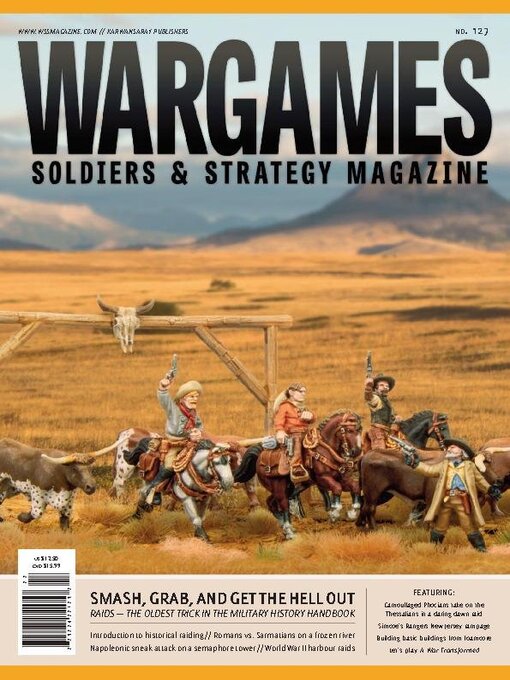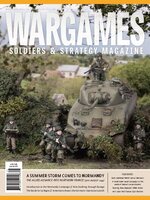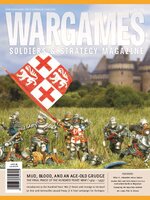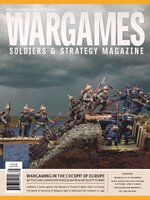Wargaming is a big hobby with many diverse factions and perspectives: striking a balance that pleases everyone can be truly challenging! We like to think what sets Wargames, Soldiers & Strategy apart from other historical wargaming magazines is its focus on having fun, no matter what kind of wargamer you are or what your background is. WS&S is a light-hearted publication, that pays particular attention to games themselves and how to play them: it doesn’t get bogged down in lengthy historical expositions or recycle content you can read yourself in any history book. While popular periods like WWII, the Napoleonic era, and the ancient world get frequent coverage, we also try to feature the unexpected, with articles on spies, monsters and gangsters to name but a few.
Wargames, Soldiers & Strategy
Editorial
MINIATURE REVIEWS • A look at some of the newest miniatures, terrain pieces, and more from across the wargaming world.
WHAT HAPPENED TO ALL THE TOY SOLDIERS? • Are there any actual toy shops left? I guess there must be a few but they are a rare species that is for sure: squeezed out by supermarkets and online stores, I suppose. It was not toy shops I was looking for as such though, it was toy soldiers. The sort of pre-painted plastic figures that were once a part and parcel of childhood. Figures made by Timpo, Herald, Lone Star and of course, Britains. Once toy shops, and by implication High Streets, were full of little Cowboys and Indians, Trojans and Greeks, Romans, Medieval Knights and World War Two soldiers. At some point – when I was not paying attention obviously – they all seem to have vanished. Gone!
SMASH AND GRAB • Grand battles are the names of places we remember which generally mark a high (or low) point in a campaign. They are about the defeat of the enemy and consequently the seizing of control over territory. Battles were for the most part rare. Raids, on the other hand, were generally smaller actions and far more common.
GHOSTS OF THE DAWN • During the sixth century BC, the people of Phocis pulled off a significant raid against their Thessalian enemy which outnumbered them many times over. The Phocians not only survived but defeated the enemy totally.
DANCING ON ICE • The Sarmatians were a group of nomadic tribes who lived in the Pontic steppe region which spans from modern day Hungary through to Ukraine. They had a warlike reputation and had supported the Dacians in earlier campaigns. Their cavalry is even thought to be depicted on Trajan's column dressed in scale armour all over their bodies and horses.
THE RAID ON CANWICK • The wars between the English and the Scots were long and hard fought but with the death of the “Great and Terrible King” Edward Longshanks and the succession of his weak and indecisive son Edward the Second, the advantage began to move towards the Scots under their highly effective leader Robert The Bruce. In June 1314 Bruce faced a large English army seeking to relieve Stirling Castle at Bannockburn, and heavily defeated it using his mobile schiltrons and aggressive tactics.
A GRAND DAY FOR A RIDE OUT • During the American War of Independence, Staten Island in New York was seen as a bastion of loyalist sentiment. The British forces stationed there offered a credible threat to Continental Army, supply sources and to local patriot militias. Prior to 1779, a series of raids by both sides had achieved little other than to polarize local support for each side.
TORCH THE TOWER • This scenario is unashamedly inspired by Hornblower and the Hot- spur (1962). Lieutenant Hornblower, of HMS Hotspur, leads a daring raid onto the French mainland during the British naval blockade of Brest, as the uneasy truce brokered by the Treaty of Amiens breaks apart in early 1803. His mission is simple: to destroy one of Napoleon's semaphore towers. After all, one of...

 WSS 138
WSS 138
 WSS 137
WSS 137
 WSS 136
WSS 136
 WSS 135
WSS 135
 WSS 134
WSS 134
 WSS 133
WSS 133
 WSS 132
WSS 132
 WSS 131
WSS 131
 WSS 130
WSS 130
 WSS 129
WSS 129
 WSS 128
WSS 128
 WSS 127
WSS 127
 WSS 126
WSS 126
 WSS 125
WSS 125
 WSS 124
WSS 124
 WSS 123
WSS 123
 WSS 122
WSS 122
 WSS 121
WSS 121